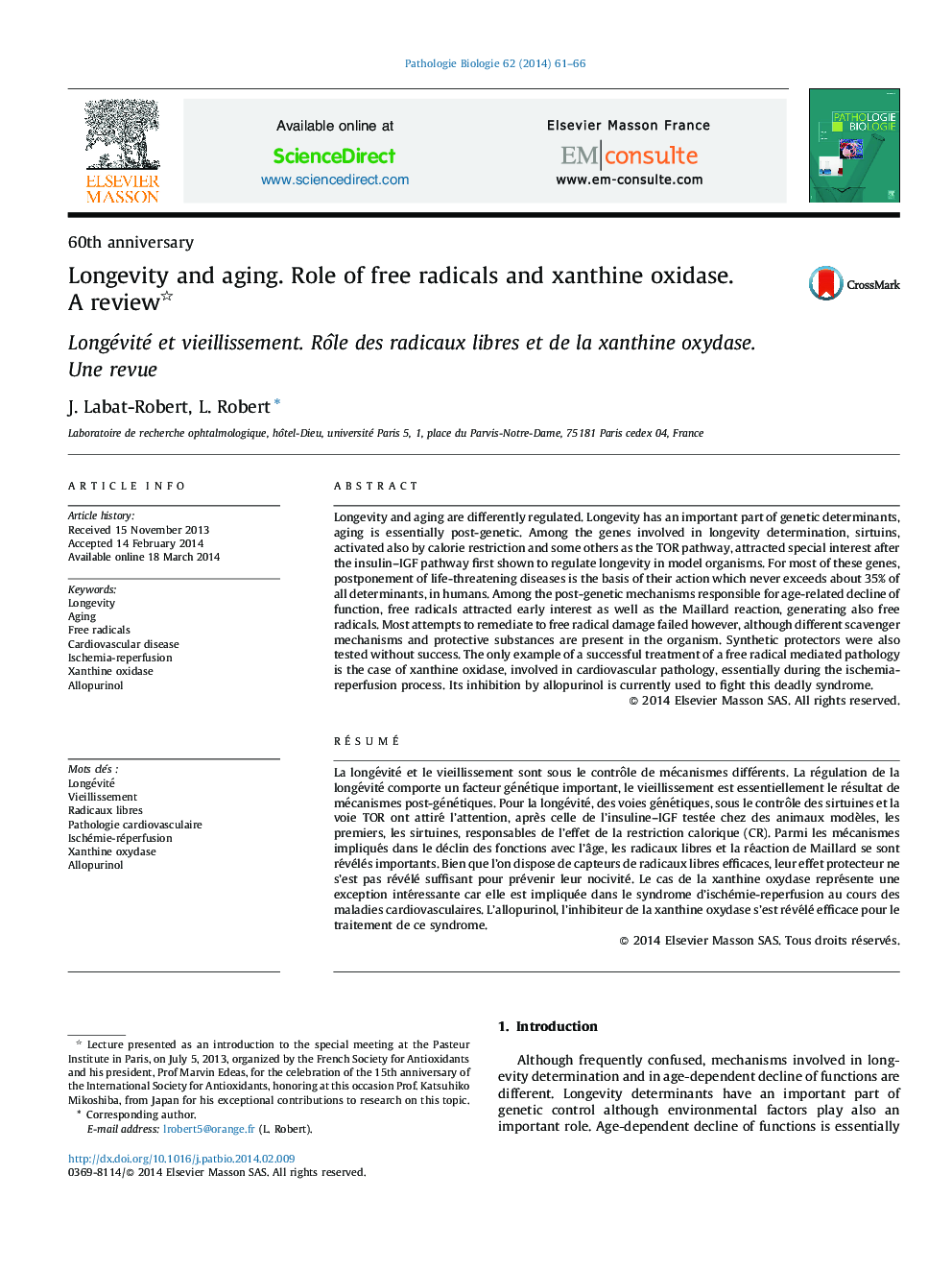| کد مقاله | کد نشریه | سال انتشار | مقاله انگلیسی | نسخه تمام متن |
|---|---|---|---|---|
| 4135942 | 1271885 | 2014 | 6 صفحه PDF | دانلود رایگان |
Longevity and aging are differently regulated. Longevity has an important part of genetic determinants, aging is essentially post-genetic. Among the genes involved in longevity determination, sirtuins, activated also by calorie restriction and some others as the TOR pathway, attracted special interest after the insulin–IGF pathway first shown to regulate longevity in model organisms. For most of these genes, postponement of life-threatening diseases is the basis of their action which never exceeds about 35% of all determinants, in humans. Among the post-genetic mechanisms responsible for age-related decline of function, free radicals attracted early interest as well as the Maillard reaction, generating also free radicals. Most attempts to remediate to free radical damage failed however, although different scavenger mechanisms and protective substances are present in the organism. Synthetic protectors were also tested without success. The only example of a successful treatment of a free radical mediated pathology is the case of xanthine oxidase, involved in cardiovascular pathology, essentially during the ischemia-reperfusion process. Its inhibition by allopurinol is currently used to fight this deadly syndrome.
RésuméLa longévité et le vieillissement sont sous le contrôle de mécanismes différents. La régulation de la longévité comporte un facteur génétique important, le vieillissement est essentiellement le résultat de mécanismes post-génétiques. Pour la longévité, des voies génétiques, sous le contrôle des sirtuines et la voie TOR ont attiré l’attention, après celle de l’insuline–IGF testée chez des animaux modèles, les premiers, les sirtuines, responsables de l’effet de la restriction calorique (CR). Parmi les mécanismes impliqués dans le déclin des fonctions avec l’âge, les radicaux libres et la réaction de Maillard se sont révélés importants. Bien que l’on dispose de capteurs de radicaux libres efficaces, leur effet protecteur ne s’est pas révélé suffisant pour prévenir leur nocivité. Le cas de la xanthine oxydase représente une exception intéressante car elle est impliquée dans le syndrome d’ischémie-reperfusion au cours des maladies cardiovasculaires. L’allopurinol, l’inhibiteur de la xanthine oxydase s’est révélé efficace pour le traitement de ce syndrome.
Journal: Pathologie Biologie - Volume 62, Issue 2, April 2014, Pages 61–66
